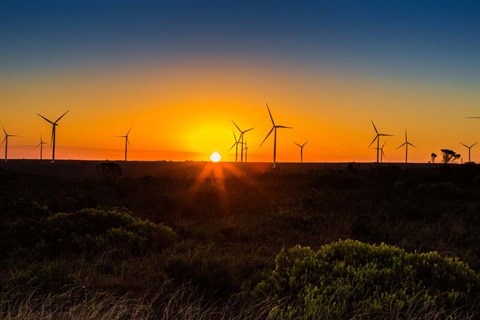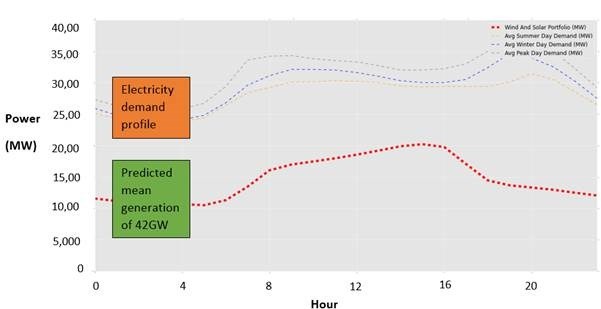
The initial results reveal two significant findings:
"This initial analysis strongly underpins the South African government's commitment to renewable energy; not only are wind and solar power cheaper than new fossil fuel generation here in South Africa but when combined, they can also make a very significant contribution to baseload power at the time of day it is most needed," said Mainstream's chief executive, Dr Eddie O'Connor.
"The analysis also shows something which gives South Africa significant competitive advantage in that the combined wind and solar resources match the average demand profile for electricity. This is significant because the wind blows and the sun shines when electricity is most needed, and this is not something that occurs with such regularity in other global markets," he said.
Mainstream analysed measured wind and solar resource data from 2013 for eighteen wind and solar sites across South Africa. The sites analysed represent a combined generation capacity of 42,000 megawatts (30,000MW wind and 12,000MW solar). The analysis set out to predict how much electricity the eighteen sites could generate and at what times of the day. Mainstream then examined Eskom's electricity demand data (for 2008) to understand the impact the 42GW of wind and solar generation could have in relation to meeting the country's electricity needs.
The preliminary results show that:

O'Connor said that it is also interesting to note that the cost of electricity offered by the most recent renewable energy projects is now well below that predicted from the state energy utility Eskom's future coal plants.
Analysts have indicated that in their analysis of the average bid price for wind projects in the REIPPPP:
This should be compared to the predicted cost of 128c/kWh for electricity from Medupi, which is designed to supply 4,764MW of new capacity.
Tina Joemat-Pettersson, the South African Minister of Energy said in a recent speech that the country has already added a total of 4,322MW of renewable energy capacity in less than four years.
"Wind and solar power are quietly been piling on capacity in South Africa. The fact that these projects have almost surpassed the output of such a station in about half the time of its still-unfinished construction is hard to ignore," concluded O'Connor.